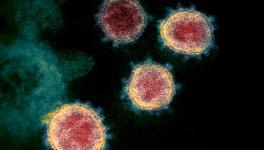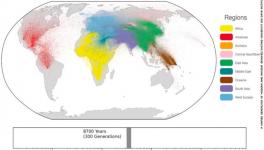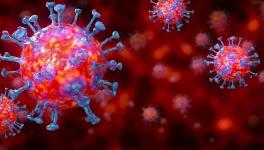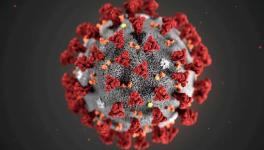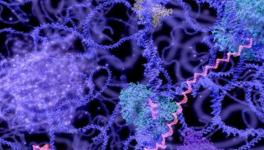CRISPR Edited Immune Cells Show Positive Results in Cancer Patients
Representational Image. Image Courtesy: Rawpixel
A small clinical trial on cancer patients may have provided a hint that Clustered Regularly Interspaced Short Palindromic Repeats (CRISPR) gene editing can be used to alter immune cells which, in turn, can be used for cancer patients. The altered immune cells can be effective in targeting mutated proteins of a cancer tumour and curbing its growth.
A recent paper published in Nature mentions the trial, which involved 16 participants with solid tumours, including breast and colon. The researchers attempted to combine two of the most-discussed topics and areas in cancer research—gene editing and engineering immune cells.
Study co-author Antoni Ribas, who is a cancer researcher and physician at the University of California, said in a statement: “It is probably the most complicated therapy ever attempted in the clinic. We’re trying to make an army out of a patient’s own T cells.” The results of the trial were also presented at the society for immunotherapy of cancer meeting held in Boston on November 10.
DNA (Deoxyribonucleic acid) is the genetic material in humans. DNA, present in very cell, consists of four components denoted by the alphabets A, T, C and G. These bases are the building blocks of DNA and are present in sequences in a variety of combinations.
A gene is part of the long DNA molecules in our cells. Gene is the portion of DNA which directs the production of a protein. For example, suppose the four letters of DNA are in a combination of ATCGATCG in its portion and if this particular segment can direct the production of a particular protein, it will be called a gene. Remember, all the portions of DNA are not genes. In conclusion, it can be said that genes are the portion of DNA that bears the code for the production of a particular protein.
In the process of gene editing, scientists change the sequences of the letters. Take the example of the ATCGATCG gene. If someone wants to edit, the sequences must be changed. Prominent ways in which editing is done is by deletion of a portion of the gene and adding another segment in place of it. Now, CRISPR is the widely-used tool to cut a gene to edit it.
In the study, the scientist edited the genes of a special type of cell of the immune system known as T cells, which play a pivotal role in fighting any infection caused by pathogens (bacteria, viruses, etc. that can cause diseases). T cells can also unleash deciding attacks on cancerous tumours. The genes of T cells are edited in such a fashion that they become fiercely active in destroying tumours.
Ribas and his colleagues started with sequencing DNA (deciphering the sequence of the four letters as explained above) from blood samples and tumour biopsies too. The researchers aimed at finding the mutation (the changing of the sequence of DNA) that is found in tumours but not in blood.
Mutation in DNA takes place naturally too. Most of these mutations are non-affecting but a few of them can become dangerous and can initiate cancer along with other diseases. Separate sequencing was done in each of the participants in the trial. “Mutations are different in every cancer and although there are some shared mutations, they are the minority,” Ribas added.
Subsequently, the researchers predicted which mutations could be better at provoking a response from T cells. After a series of analyses using algorithms, they could validate their predictions and designed proteins called T cell receptors (TCRs), which can recognise a tumour. TCRs are found on the surface of T cells and they first recognise pathogens and abnormal cells and then elicit signals based upon which T cells launch an attack.
The researchers then took blood samples from each patient and used CRISPR gene editing to insert the desired genes into T cells. Each participant was treated with the engineered T cells. Technically, this is a tremendously complicated process of cell engineering.
Each participant received the engineered T cells. It was found that the T cells were circulating in their blood. Importantly, the researchers found that the edited T cells were present in higher concentrations near the tumours than the non-engineered cells used to be earlier.
One month after the treatment, five participants felt stabilised, which indicates that the tumours had stopped growing. Two participants experienced side effects which most probably was due to the activity of the engineered T cells.
However, the efficacy of the treatment was found to be low. Ribas said that the researchers used relatively small doses of the engineered T cells only to establish the safety of the approach first. “We just need to hit it stronger the next time,” Ribas said.
The researchers developing ways of speeding up the therapies, and the engineered cells will spend less time being cultured outside of the body. They could be more active when they are infused and the technology will get better and better, according to Joseph Fraietta, who designs T cell cancer therapy at the University of Pennsylvania.
Get the latest reports & analysis with people's perspective on Protests, movements & deep analytical videos, discussions of the current affairs in your Telegram app. Subscribe to NewsClick's Telegram channel & get Real-Time updates on stories, as they get published on our website.











